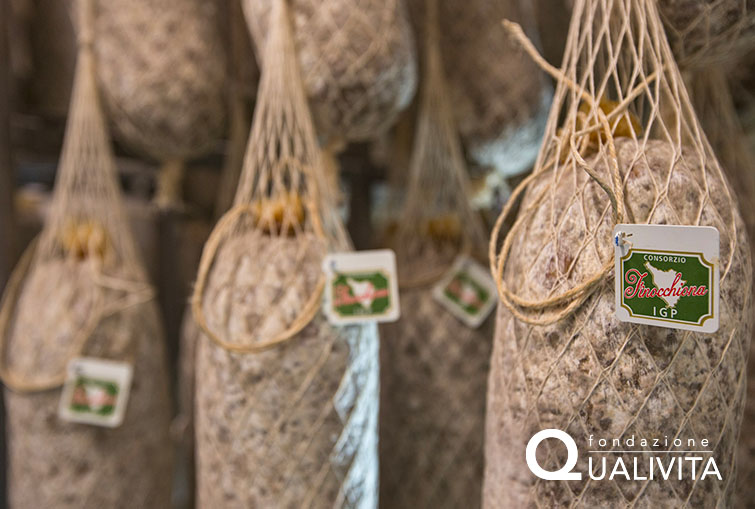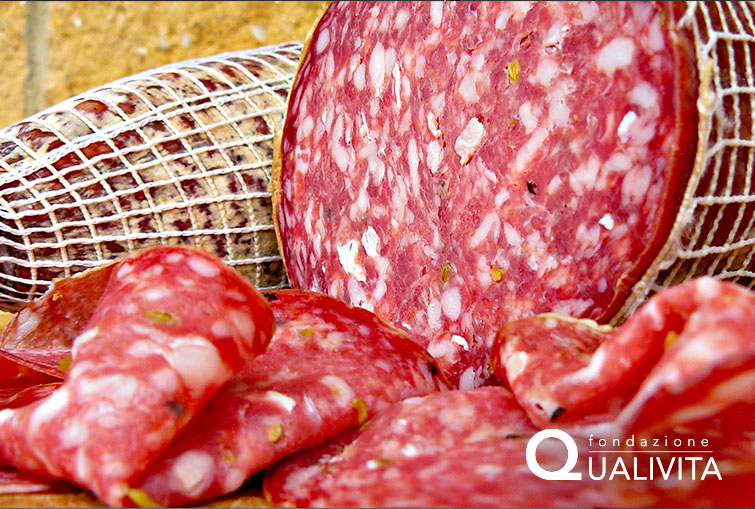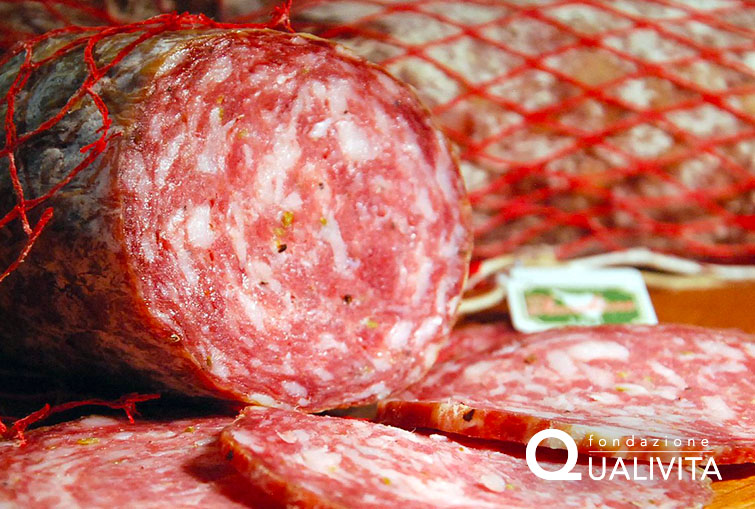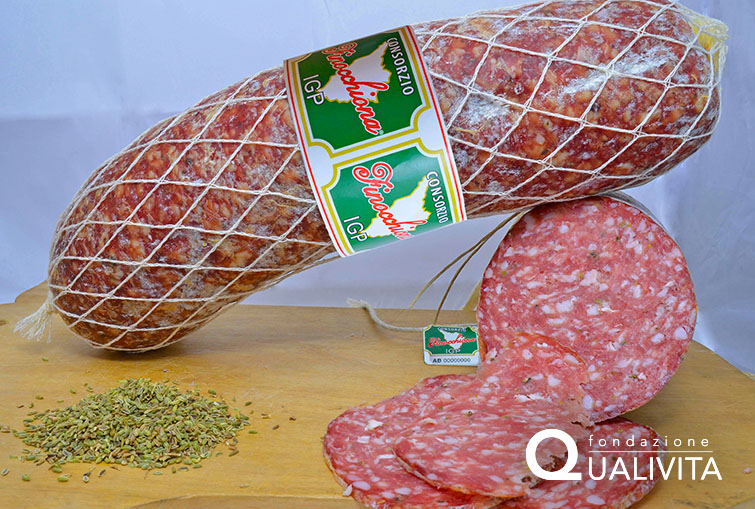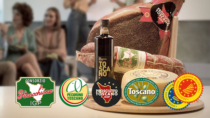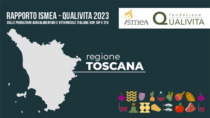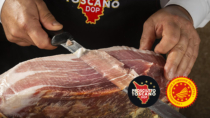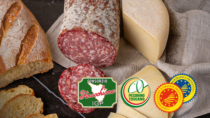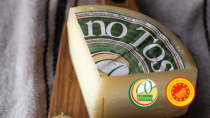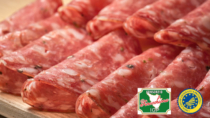Description
Finocchiona PGI is a charcuterie product made with pig meat from the traditional Italian Large White, Landrace and Duroc breeds, characterised by an aroma of fennel, the seeds and/or flowers which are added to the mince. Finocchiona PGI can also be produced exclusively with Cinta Senese PDO meat.
Production Area
The production area of Finocchiona PGI is within the entire territory of the Tuscany region, excluding the islands, in which the entire processing cycle, including slicing and packaging, must take place.
Production Method
The pork cuts selected for the production of Finocchiona PGI are: boneless and defatted shoulder, ham trimmings, rump, collar, lean belly and collar, coppa, belly and flank. Salt, ground pepper, peppercorns, garlic, fennel seeds and/or flowers are added to the cuts. The seasoned pig meat is then diced and minced in a meat grinder. The mince is stuffed into natural or dry casings, which are then tied with twine or covered in netting made from natural materials. If, on the other hand, the product is destined for subsequent processing, such as cutting or slicing, metal or plastic fastenings can be used, and for products weighing between 6 and 25 kg, the use of casings and synthetic nets is also allowed. The sausage must not weigh less than 500 g or more than 25 kg. The product is then dried in environments with a temperature ranging between 12 and 25°C. It is then cured at a temperature between 11 and 18°C, with a relative humidity of between 65 and 90%, for a period that varies from 15 to 45 days, based on the weight.
Appearance and Flavour
Finocchiona PGI has a cylindrical shape and a smooth consistency. The fat and lean parts, medium-large grain, blend into each other and the fat particles are distributed in such a way that they encompass the muscular parts, rendering the product soft even after long periods of curing. The colour varies from the bright red of the lean meat to the white/pinkish-white of the fatty parts, with the possible presence of fennel seeds and flowers. It has a fresh, appetizing flavour that’s never acidic, with a characteristic aroma of fennel and a faint hint of garlic.
History
Finocchiona PGI is inextricably linked to Tuscany. Its origins date back to the Middle Ages, when fennel seeds, which were easily found in the fields, were used as a substitute for the rarer and more expensive pepper. Already well-known and appreciated in fifteenth-century Tuscany, both by the general population and in aristocratic circles, it is believed that Machiavelli was also particularly fond of this charcuterie product. There are many historical references to the term “Finocchiona” in nineteenth and twentieth-century works: in 1875, it was mentioned in the Vocabolario della lingua parlata by Rigutini and Fanfani, and again in the Dizionario del vernacolo fiorentino by Pirro Giacchi, published in 1878. Another reference can be found in the Dizionario Enciclopedico Italiano, published between 1955 and 1961 by the Istituto della Enciclopedia Italiana founded by Giovanni Treccani, where Finocchiona is defined as “Salume tipico toscano” (typical Tuscan charcuterie product).
Gastronomy
Finocchiona PGI should be kept in a cool place or in the refrigerator, with the cut end covered with a cloth to maintain the product’s freshness and tenderness. Finocchiona PGI should be eaten with Pane Toscano PDO, unsalted Tuscan bread, which enhances the aroma of fennel, but it is also excellent with focaccia bread and salty flat bread, accompanied by cooked vegetables or vegetables preserved in oil and Pecorino Toscano PDO cheese. It pairs perfectly with the local red wines, leaving a fresh sensation and unmistakable aromas on the palate.
Marketing
The product is only marketed as Finocchiona PGI. It is sold whole, in various sizes, ranging from small to huge for delicatessens, in pieces or packaged, both in small vacuum-packed pieces or pre-sliced in protective atmosphere packaging.
Distinctive Features
Finocchiona PGI is characterized by the unmistakable and pronounced aroma of the fennel seeds and/or flowers used in the mince, from which the name “Finocchiona” derives, and for the skilful processing that ensures the exceptional tenderness of each slice.





